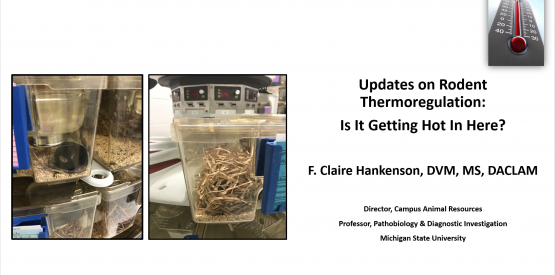Laboratory mice and rats have been shown to prefer temperatures that are several degrees warmer than the environments in which they are typically housed. Animals housed under warmed environmental conditions have been shown to have decreased metabolic rates, lower heart rates and blood pressure, and improved immune function. Various disciplines of medical investigations, including cancer models, atherosclerosis, liver disease, toxicology and microbiome research, have published on blunting of disease phenotypes when mice are housed under Guide-recommended temperature conditions (20-26°C). While cage accommodations can be made to include warmth through increased stocking density of animals and provision of nesting materials and shelters, these efforts may not be sufficient or appropriate to result in consistent and reproducible data outcomes. Within the animal research industry, creative approaches to warming sections of cages and racks or increasing overall room temperatures are being explored with beneficial effect. Environmental and procedural interventions for laboratory mice and rats will be reviewed relative to the importance of achieving reproducibility and repeatability of rodent studies. Keywords: ivc rack system,ivc system,mouse ivc,lab mouse cage,laboratory animal equipment,laboratory mouse cage,laboratory rodent cages,animal research cages,lab rat cage,laboratory rat housing,mouse rack,animal lab products,rack system for rats,rodent cage,cage density,optimice,animal care systems,lab mice,thermoneutral zone,USB power,heated mouse cages,behavioral studies,heated IVC,circadian rhythm,recovery rack,neuroscience,heat plate,aalas20,webinar, SMART System
Updates on Rodent Thermoregulation: Is it Getting Hot in Here? by Dr. F. Claire Hankenson


